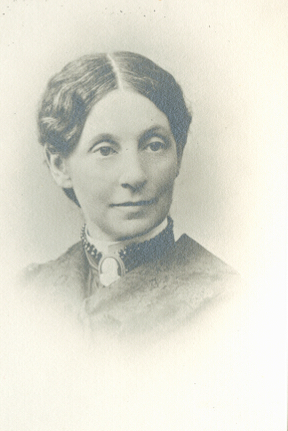This is a list of Washington, D.C. suffragists, suffrage groups and others associated with the cause of women's suffrage in Washington, D.C.
This is a list of Washington, D.C. suffragists, suffrage groups and others associated with the cause of women's suffrage in Washington, D.C.

The National Woman's Party (NWP) was an American women's political organization formed in 1916 to fight for women's suffrage. After achieving this goal with the 1920 adoption of the Nineteenth Amendment to the United States Constitution, the NWP advocated for other issues including the Equal Rights Amendment. The most prominent leader of the National Woman's Party was Alice Paul, and its most notable event was the 1917–1919 Silent Sentinels vigil outside the gates of the White House.

Helen Pitts Douglass (1838–1903) was an American suffragist, known for being the second wife of Frederick Douglass. She also created the Frederick Douglass Memorial and Historical Association, which became the Frederick Douglass National Historic Site.

The Congressional Union for Woman Suffrage was an American organization formed in 1913 led by Alice Paul and Lucy Burns to campaign for a constitutional amendment guaranteeing women's suffrage. It was inspired by the United Kingdom's suffragette movement, which Paul and Burns had taken part in. Their continuous campaigning drew attention from congressmen, and in 1914 they were successful in forcing the amendment onto the floor for the first time in decades.

Nina Evans Allender was an American artist, cartoonist, and women's rights activist. She studied art in the United States and Europe with William Merritt Chase and Robert Henri. Allender worked as an organizer, speaker, and campaigner for women's suffrage and was the "official cartoonist" for the National Woman's Party's publications, creating what became known as the "Allender Girl."

The Suffragist was a weekly newspaper published by the Congressional Union for Woman Suffrage in 1913 to advance the cause of women's suffrage. The publication was first envisioned as a small pamphlet by the Congressional Union (CU), a new affiliate of the National American Woman Suffrage Association (NAWSA), which in 1917 became the NWP. It evolved into an eight-page weekly tabloid newspaper when the first issue appeared on 15 November 1913.

Women's suffrage was established in the United States on a full or partial basis by various towns, counties, states, and territories during the latter decades of the 19th century and early part of the 20th century. As women received the right to vote in some places, they began running for public office and gaining positions as school board members, county clerks, state legislators, judges, and, in the case of Jeannette Rankin, as a member of Congress.

Eunice Rockwood Oberly was a librarian who spent her career with the United States Department of Agriculture. She is best known for her work as the librarian of the Bureau of Plant Industry and for compiling the Check List of Publication of the State Agricultural Experiment Stations on the Subject of Plant Pathology 1876-1920.

Anna E. Hendley, born Anna Elizabeth Mills, was an American suffragist, founder and leader of the Anthony League, later the Susan B. Anthony Foundation.

This is a timeline of women's suffrage in Utah. Women earned the right to vote on February 12, 1870 while Utah was still a territory. The first woman to vote under equal suffrage laws was Seraph Young on February 14, 1870. During this time, suffragists in Utah continued to work with women in other states to promote women's suffrage. Women continued to vote until 1887 when the Edmunds-Tucker Act was passed. When Utah was admitted as a state in 1896, women regained the right to vote. On September 30, 1919 Utah ratifies the Nineteenth Amendment. Native American women did not have full voting rights in Utah until 1957.

Art in the women's suffrage movement of the United States played a critical role. Art was used both as propaganda and as a way to represent the leaders of the movement as historical records. Art sales and shows were also used to raise money for campaigns.